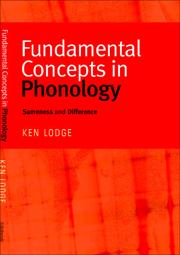Book contents
3 - Biuniqueness and monosystemicity
Published online by Cambridge University Press: 05 August 2013
Summary
Biuniqueness. Any phone in a given environment must be an allophone of one and only one phoneme – to prevent ambiguity and secure unique read-off.
(Lass, Phonology)Introduction
In this chapter I want to consider analyses which seem to assume some kind of biuniqueness. Thereby I want to demonstrate the way in which biuniqueness, and with it monosystemicity, obscure the facts and complicate the phonological analysis of language.
Fudge (1967) discusses abstractness in phonological primes, an issue I return to in Chapter 5. In this paper he argues that the most important reason for distinguishing between phonetics and phonology is what Chomsky (1964) calls biuniqueness. The argument was originally made against a background of structuralist phonemics which equated the two. Any speech sound is interpreted as a segment and classified with a universal set of descriptive articulatory labels. This process of interpretation classifies the sounds as segments of the same type (phones): stops, fricatives, front vowels, nasals etc. Once such an identification is made it is fixed for the language in question and all similarly identifiable segments are associated with that class. Thus, in English, onset [d] and coda [d] are identified as being the same on all occasions; the same applies to onset [b] and coda [b], onset [m] and coda [m], and so on. Phonetic differences – for example, delayed onset of voicing in the onset position, pre-release cessation of voicing in the coda – are ignored.
- Type
- Chapter
- Information
- Fundamental Concepts in PhonologySameness and Difference, pp. 25 - 41Publisher: Edinburgh University PressPrint publication year: 2009



